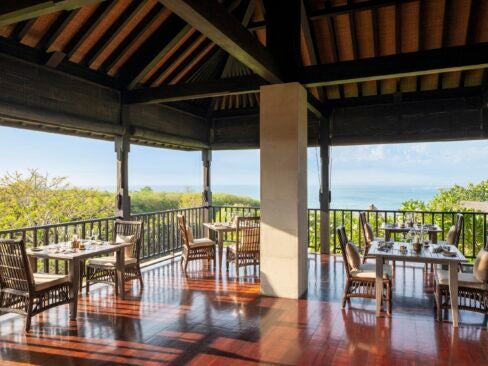 As the capital city and main metropolis of Oman, Muscat spans a vast 3,500 square kilometers of land, encompassing six different provinces within its perimeters. For many centuries the city acted as an important trading port between the east and west, and now reflects its Persian, Portuguese and Ottoman influence through its distinct cultural identity. Geographically the city then lies between the Western Al Hajar Mountains and the Arabian Sea, with low-rise white buildings running inland from the city’s harbor. Each of these characteristics the city lays claim to makes Muscat the captivating destination it is today.
As the capital city and main metropolis of Oman, Muscat spans a vast 3,500 square kilometers of land, encompassing six different provinces within its perimeters. For many centuries the city acted as an important trading port between the east and west, and now reflects its Persian, Portuguese and Ottoman influence through its distinct cultural identity. Geographically the city then lies between the Western Al Hajar Mountains and the Arabian Sea, with low-rise white buildings running inland from the city’s harbor. Each of these characteristics the city lays claim to makes Muscat the captivating destination it is today.
Arts and Culture
 Reflecting its strong cultural identity, the city has a number of mosques to seek out; the Sultan Qaboos Grand Mosque is widely considered to be Muscat’s most architecturally impressive sight, exhibiting royal Omani design. This particular mosque is open to visitors each morning, with the exception of Friday. Al Khor Mosque can also be visited at these times; said to be one of Oman’s oldest and most beautiful sites, the landmark is characterized by its intricate decoration of calligraphy and colorful tiles.
Reflecting its strong cultural identity, the city has a number of mosques to seek out; the Sultan Qaboos Grand Mosque is widely considered to be Muscat’s most architecturally impressive sight, exhibiting royal Omani design. This particular mosque is open to visitors each morning, with the exception of Friday. Al Khor Mosque can also be visited at these times; said to be one of Oman’s oldest and most beautiful sites, the landmark is characterized by its intricate decoration of calligraphy and colorful tiles.
The Royal Opera House Muscat is then the city’s premier venue for music and the arts. Located in the Shati Al-Qurm district, this architecturally impressive venue is the setting for concerts, dance performances, musicals and theatrical performances, with appearances from world-renowned artists. Art galleries are dotted throughout the city too, from MuscArt photography and arts space, which is committed to engaging and adding value to the local and international arts scene, to Bait Al Zubair heritage and cultural center, which houses one of the country’s largest permanent art collections.
The Outdoors
In its position between the mountains and sea, Muscat provides plenty of opportunities to explore the natural surroundings. Stroll along the sandy shores of Qurum Beach, Al Sifah Beach and Qantab Beach, and explore the lush green gardens of Qurum National Park, which covers a vast area of land; Muscat’s amphitheater is also located here. Day trips can easily be taken into the surrounding desert and mountains for further exploration, including the canyons and pools of Wadi Al Arbeieen in the Al Hajar Mountains.
WHERE TO STAY
 The Chedi Muscat
The Chedi Muscat
Backed by the Al Hajar Mountains and overlooking the Gulf of Oman, The Chedi Muscat lies in a remarkably scenic location, within 21 acres of landscaped gardens. Combining Omani architecture with contemporary design, the stylish hotel is made up of a collection of villas, six restaurants and a Balinese spa and health club, with a stunning palm tree-lined 103-meter-long pool at its heart.
Shangri-La Barr Al Jissah Resort & Spa
Three hotels are in fact encompassed within this waterfront resort. While Al Waha is distinguished by its Dhofari architecture and pools amid date palms, Al Bandar Hotel draws people in with its restaurants, shopping and art gallery, and Al Husn provides the opulence of an Arabian palace with suites that are among the largest in Oman. Clustered around the bay, the three distinct settings come together harmoniously.
Grand Hyatt Muscat
Rising up from the sandy shores of Shatti al Qurum, the Grand Hyatt Muscat exudes grandeur through its lavish Arabian architecture and beachfront swimming pool, with sumptuous interiors running all the way throughout and a selection of restaurants and bars, including the alfresco dining space of Marjan Restaurant and the scenic Safari Rooftop Grill House.










